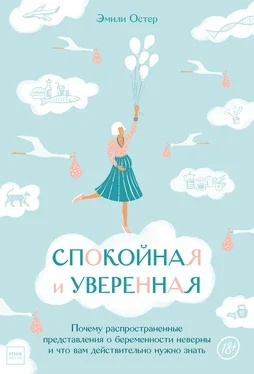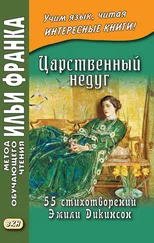W. Grobman, “LB01: A Randomized Trial of Elective Induction of Labor at 39 Weeks Compared Expectant Management of Low-Risk Nulliparous Women,” Journal of Obstetrics & Gynecology 218, no. 1, S601.
Z. Alfirevic, Kelly, and T. Dowswell, “Intravenous Oxytocin Alone Ripening and Induction of Labour,” Cochrane Database of Systematic Reviews 4 (2009).
Kelly et al., “Vaginal Prostaglandin (PGE2 and PGF2a) Induction Labour at Term,” Cochrane Database of Systematic Reviews 2009).
N. R. Miller et al., “Elective Induction of Labor Compared with Expectant Management of Nulliparous Women at 39 Weeks of Gestation: A Randomized Controlled Trial.” Obstetrics & Gynecology 126, no. 6 (2015): 1258–64; W. W. Grobman, “LB01: A Randomized Trial of Elective Induction of Labor 39 Weeks Compared with Expectant Management of Low-Risk Nulliparous Women,” American Journal of Obstetrics & Gynecology 218, no. 1, S601.
Gabbe, Niebyl, and Simpson. Obstetrics: Normal and Problem Pregnancies.
D. Elsandabesee, S. Majumdar, and S. Sinha, “Obstetricians’ Attitudes Towards ‘Isolated’ Oligohydraminos at Term,” Journal of Obstetrics and Gynaecology 27, no. 6 (2007): 574–76.
E. Mozurkewich et al., “Indications Induction of Labour: Best-Evidence Review,” BJOG 116, no. 5 (2009): 626–36.
S. Ek et al., “Oligohydraminos in Uncomplicated Pregnancies Completed Weeks,” Fetal Diagnosis and Therapy 20 (2005).
J. Zhang et al., “Isolated Oligohydraminos Is Not Associated Adverse Perinatal Outcomes,” BJOG 111, no. 3 (2004): 220–25.
N. Melamed et al., “Perinatal Outcome in Pregnancies by Isolated Oligohydraminos Diagnosed Bee 37 Weeks Gestation,” American Journal of Obstetrics and Gynecology 205 e6.
A. F. Nabhan and Y. A. Abdelmoula, “Review Amniotic Fluid Index Versus Single Deepest Vertical Pocket: Meta-Analysis of Randomized Controlled Trials,” International Journal Gynecology and Obstetrics 104 (2009): 184–88.
G. J. Hofmeyr and A. M. Gulmezoglu, Hydration Increasing Amniotic Fluid Volume in Oligohydraminos Normal Amniotic Fluid Volume,” Cochrane Database of Reviews 1 (2002).
Q. Xi et al., “Clinical Study on False Non-Reactive of Non-Stress Test by Improved Acoustic Stimulation,” Archives of Gynecology and Obstetrics 284, no. 2 (2011): 271–74.
K. E. McCarthy and D. Narrigan, There Scientifi c Support the Use of Juice to Facilitate the Test?” Journal of Obstetric, Gynecologic, & Neonatal Nursing (1995): 303–7.
Гипоксия плода — состояние, при котором плод испытывает кислородное голодание, на фоне чего развиваются тяжелые осложнения со стороны сердечно-сосудистой и дыхательной систем, головного мозга и т. д. В тяжелых случаях это прямое показание к оперативному родоразрешению. Прим. науч. ред.
Есть некоторые советы, которые мы пропустили, такие как баклажаны и острая еда или размахивание угольной палочкой над животом (мы серьезно!). Некоторые люди готовы на все! Так или иначе, нет никаких реальных доказательств эффективности этих рекомендаций.
H. G. Hall, L. G. McKenna, L. Griffiths, “Discussion: Complementary and Alternative Induction of Labour,” Women and Birth 25, no. 3 (September 142–48.
M. Simpson et al, “Raspberry Leaf in Pregnancy: Its Safety and Efficacy in Labor,” Midwifery & Women’s Health 46, no. 2 (2001): 51–59.
D. Dove Johnson, “Oral Evening Primrose Oil: Its Effect on Length of Pregnancy Selected Intrapartum Outcomes in Low-Risk Nulliparous Journal of Nurse-Midwifery 44, no. 3 (1999): 320–24.
P. Effect of Coitus at Term on Length of Gestation, Induction and Mode of Delivery,” Obstetrics & Gynecology 108, no. 134–40.
P. C. M. Yow, and S. Z. Omar, “Effect of Coital Activity on Onset of Labor in Women Scheduled Labor Induction,” Obstetrics & Gynecology 110, no. 4 (2007): 820–26.
C. A. Smith and C. A. Crowther, “Acupuncture Induction of Labour,” Cochrane Database of Systematic Reviews 1 (2004).
J. Modlock, B. B. Nielsen, and N. Uldbjerg, “Acupuncture the Induction of Labour: A Double-Blind Randomised Controlled Study,” BJOG 117, no. 10 (2010): 1255–61.
C. A. Smith, C. A. Crowther, C. T. Collins, and M. E. Coyle, “Acupuncture to Induce Labor: A Randomized Controlled Trial,” Obstetrics and Gynecology 112, no. 5 (2008): 1067–74.
J. Kavanagh, A. J. Kelly, and J. Thomas, “Breast Stimulation Cervical Ripening and Induction of Labour,” Cochrane Database of Systematic Reviews 3, article no. CD003392 (2005).
M. Boulvain, C. M. Stan, and O. Irion, “Membrane Sweeping Induction of Labour,” Cochrane Database of Systematic Reviews 1 (2005).
E. A. Friedman, “Primigravid Labor; a Graphicostatistical Analysis,” Obstetrics & Gynecology 6, no. 6 (1955): 567–89.
J. Zhang, J. F. Troendle, and M. K. Yancey, “Reassessing Curve in Nulliparous Women,” American Journal of Obstetrics Gynecology 187, no. 4 (2002): 824–28.
Steven Gabbe, Jennifer Niebyl, and Joe Leigh Obstetrics: Normal and Problem Pregnancies (Philadelphia, Churchill Livingstone, 2007).
M. Westgren et al., “Spontaneous Cephalic Breech Presentation in the Last Trimester,” BJOG 92 (1985).
G. J. Hofmeyr and K. Regina, “External Version Breech Presentation at Term,” Cochrane Database Systematic Reviews 1, article no. CD000083 (1996).
J. M. Dodd et al., “Planned Elective Caesarean Section Versus Planned Vaginal Birth Women with Caesarean Birth,” Cochrane Database of Systematic Reviews 004224 (2004).
Caroline Crowther et al., Vaginal Birth or Elective Repeat Caesarean: Patient Preference Cohort with Nested Randomised Trial,” PLOS Medicine 2012): e1001192.
E. Mozurkewich and E. Elective Repeat Caesarean Delivery Versus Trial of Labor: Meta-Analysis of the Literature from 1989 to 1999,” American Journal Obstetrics and Gynecology 183 (2000): 1187–97.
Сумеречный сон — бредоподобное состояние, вызываемое введением скополамина, морфина и фенобарбитала. Прим. ред.
Читать дальше
Конец ознакомительного отрывка
Купить книгу












